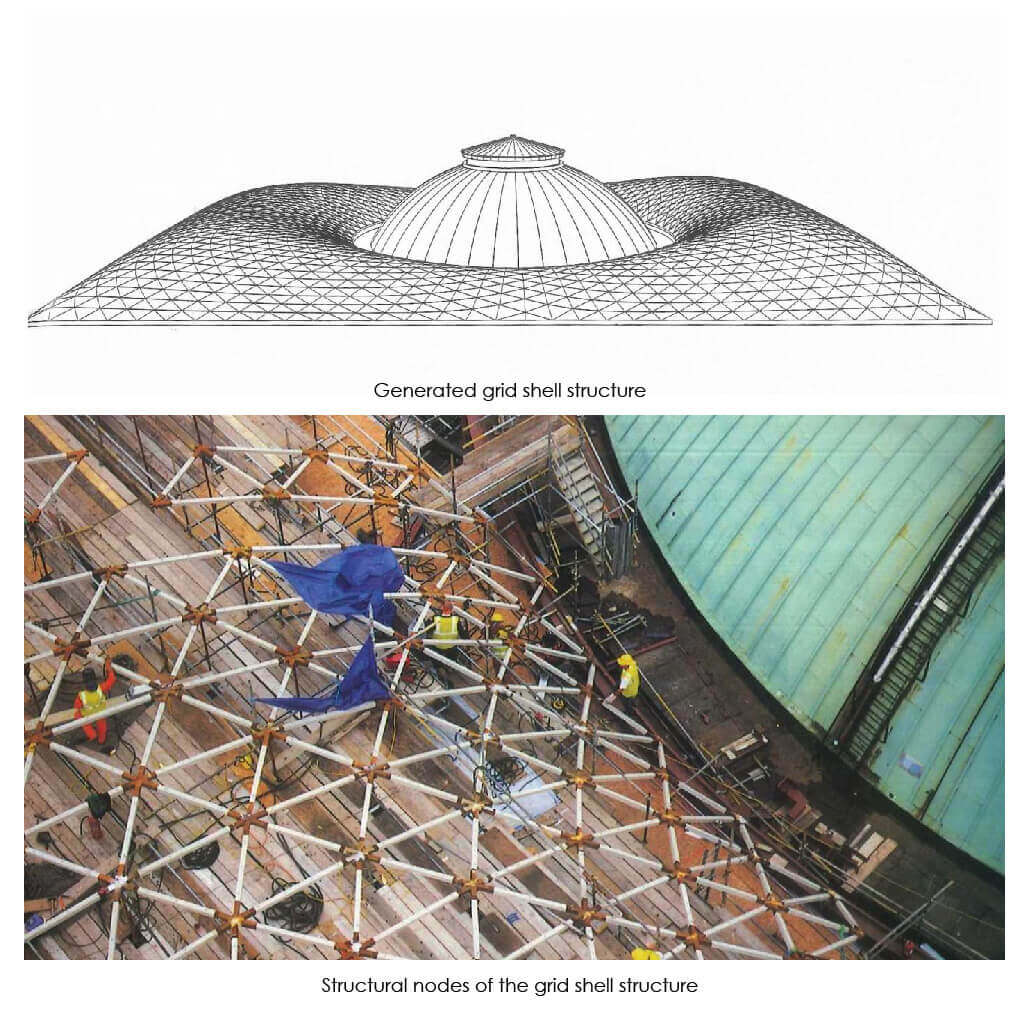Lattice Structures
Rethinking complexity: steel lattice structures, past and present
By: Elizaveta D Edemskaya
January 2014
The University of Liverpool
 The study of the past focuses on Vladimir Shukhov’s construction systems. In late 19th century this Russian engineer invented and successfully applied the tessellation method to double-curved surfaces using simple standardized elements. The study of the present digital approach revolves around leading architects using computational tools, including Norman Foster and Frank Gehry, who have materialized complex geometries of irregular units by taking advantage of computational tools.
The study of the past focuses on Vladimir Shukhov’s construction systems. In late 19th century this Russian engineer invented and successfully applied the tessellation method to double-curved surfaces using simple standardized elements. The study of the present digital approach revolves around leading architects using computational tools, including Norman Foster and Frank Gehry, who have materialized complex geometries of irregular units by taking advantage of computational tools.
 The two approaches are compared based on the following criteria: design process, structural construction principles, fabrication process, assembly and construction cost. In the conclusion, some suggestions are put forward about how principles of the past may inform current computational design procedures.
The two approaches are compared based on the following criteria: design process, structural construction principles, fabrication process, assembly and construction cost. In the conclusion, some suggestions are put forward about how principles of the past may inform current computational design procedures.
 Technology, materials and construction are three interdependent components that change architecture. Contemporary architecture started with the Industrial Revolution, which brought new technologies and new construction materials: iron and steel. Due to the high load-capacity and the elastic qualities of these new materials, architectural construction had significantly changed. The height of buildings started to increase, and so did their span. Architects and engineers aimed to optimize buildings utilizing the advantageous properties of the new materials, and to apply new technologies to improve the construction process. Prefabrication and standardization methods emerged; they are widely applied today. Off-site manufacturing in the controlled environment of a factory or workshop enables better fabrication element quality control, whereas element unification simplifies the production process and reduces the building cost. Then, the advent of computational technologies in the 20th century opened a new chapter in architecture.
Technology, materials and construction are three interdependent components that change architecture. Contemporary architecture started with the Industrial Revolution, which brought new technologies and new construction materials: iron and steel. Due to the high load-capacity and the elastic qualities of these new materials, architectural construction had significantly changed. The height of buildings started to increase, and so did their span. Architects and engineers aimed to optimize buildings utilizing the advantageous properties of the new materials, and to apply new technologies to improve the construction process. Prefabrication and standardization methods emerged; they are widely applied today. Off-site manufacturing in the controlled environment of a factory or workshop enables better fabrication element quality control, whereas element unification simplifies the production process and reduces the building cost. Then, the advent of computational technologies in the 20th century opened a new chapter in architecture.




























Comments